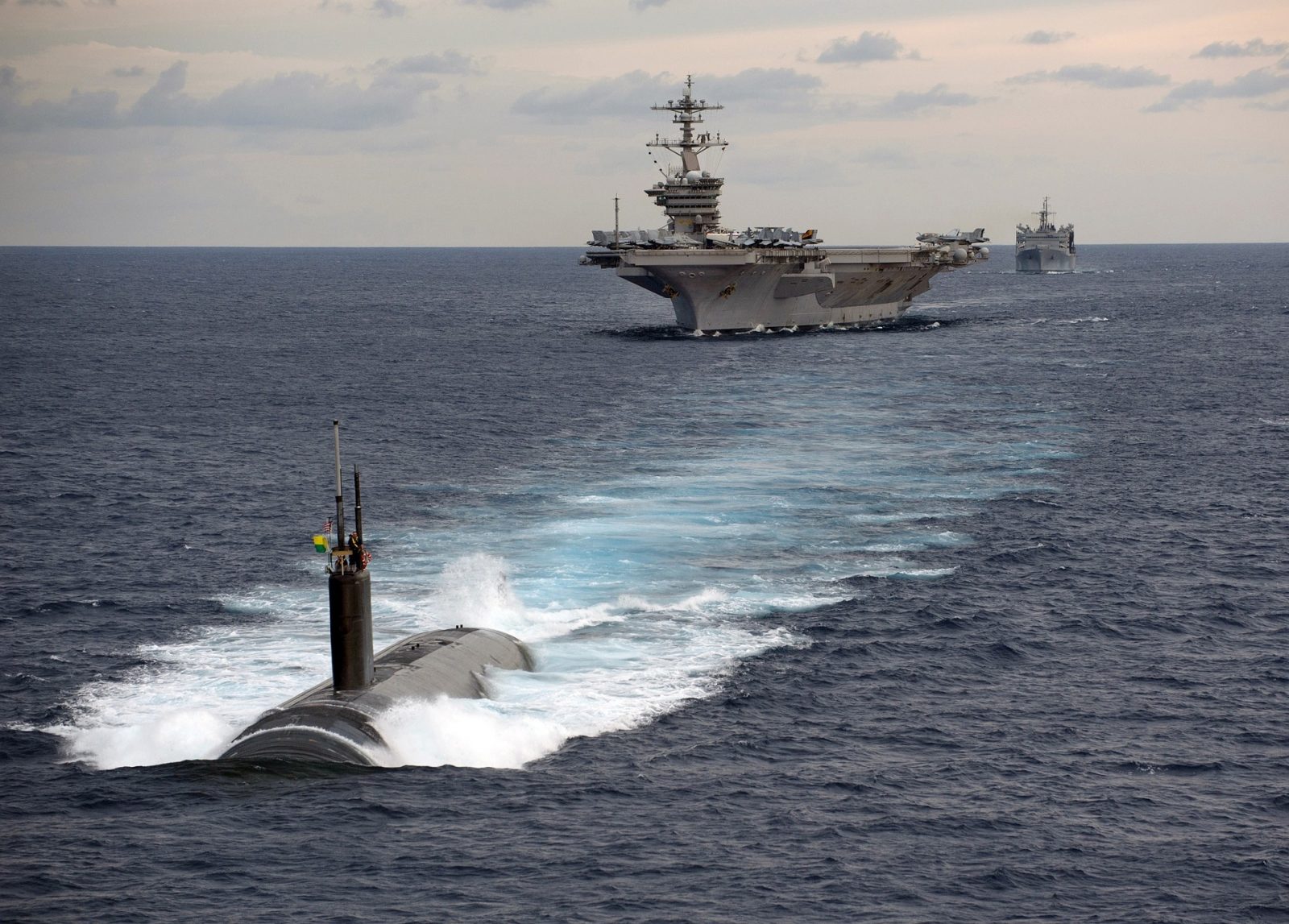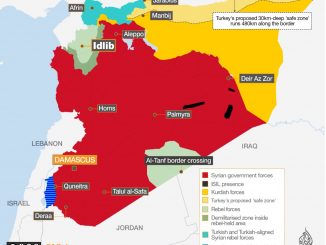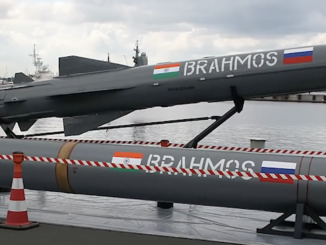
The Supplemental Low Yield SLBM Warhead – Strategic Implications
In February 2020 the US fielded a new low yield SLBM Warhead designated as the ‘Supplemental Low Yield SLBM Warhead W 76-2.’ On 24 April 2020 Bureau of Arms Control Verification and Compliance of the US State Department issued a memorandum explaining the rationale for introducing the new warhead to be mounted on Trident-2 D5 submarine-launched ballistic missiles on the US Navy’s Ohio class submarines. Each of these submarines carries 20 SLBMs of which 1-2 missiles would be armed with the new W-76-2 warhead with a yield of 5 kilotons. The remaining SLBMs would carry either W 76-1 warheads of 90 kiloton yield or W-88 warheads of 455 kilotons yield. Each of the Trident missiles can carry up to 8 warheads. The decision to develop and deploy such a capability was part of the Trump administration’s 2018 Nuclear Posture Review (NPR-2018) which also calls for the development of a new Submarine Launched Nuclear Cruise Missile. As the State Department document explains the W-76-2 is a short term stop-gap measure pending the longer-term solution in the form of new SLCM which will take some time to materialize.
The NPR- 2018 had outlined the roles of US nuclear weapons as under:-
- Deterrence of nuclear and non-nuclear attack;
- Assurance of allies and partners;
- Achievement of U.S. objectives if deterrence fails; and
- Capacity to hedge against an uncertain future.
It talked of a ‘flexible and tailored’ deterrence to meet diverse nature of threats ranging from the possible use of sub-strategic nuclear capabilities being developed by the Russians and the Chinese in a regional conflict scenario, which the State Department document terms as ‘Significant Non-Nuclear Strategic Attacks (SNNSAs). The NPR also mentioned North Korea’s nuclear capabilities and Iran’s potential capabilities despite the Joint Comprehensive Plan of Action (JCPOA) – also known as the Iran Deal. The current State Department paper also mentions DPRK and refers to ‘nuclear break out capabilities’ in an ostensible reference to Iran. However, much of the rationalization of the introduction of a Low Yield Warhead atop an unmistakably strategic delivery system revolves around Russia’s military doctrine and its efforts at modernizing and improving its sub-strategic nuclear weapons capabilities. It talks about Russia’s policy of using battlefield nuclear weapons in a theatre of conflict with the US and its NATO allies under what has been dubbed as the policy of ‘escalate to de-escalate.’
The argument in the State Department document is that Russians are likely to use these weapons to gain an advantage in a conventional conflict sensing a gap in the range of US response capabilities since the US had unilaterally withdrawn its ground-based ‘tactical’ nuclear weapons from Europe in the early 1990s. Given the break up of the Soviet Union and the end of the Cold War, these weapons were seen as having lost their utility. Moreover, many of these weapon systems had become obsolescent and needed replacement or upgradation if they were to be forward deployed. The only so-called ‘tactical’ nuclear weapons still deployed in Europe consist of air-delivered gravity bombs carried by US dual-use aircraft – currently, F-15 E to be replaced by F-35 aircraft as well as allied dual-use aircraft carrying B-61-12 gravity bombs.
At the height of the Cold War, the US had stockpiled and deployed a variety of low yield nuclear warheads in Europe ranging from Atomic Demolition Mines (ADMs) to nuclear artillery shells and short-range missiles like Nike and Lance with ranges from 70-100 km. At one time the US had also a short-range bazooka type nuclear weapon with a range of 3-4 km called ‘Davy Crocket.’ US Assistant Secretary of State who is also the Under Secretary of State for Non-Proliferation and International Security in his introduction to the State Department memo did mention nuclear artillery, ADMs and Davy Crocket but didn’t mention the Lance and other short-range SSMs. Ironically, citing the US experience in the 70s and 80s of the destabilizing potential of the short-range forward deployed nuclear weapons, he advised India and Pakistan not to go down this path.
The whole US rationale of developing and deploying of the W 76-2 low yield warhead revolves around provocative Russian military and nuclear doctrine. However, a look at the Russian doctrine suggests that worried by its conventional forces’ weakness vis-à-vis US and NATO and the eastward expansion of NATO right up to the Russian borders, it intends to use its sub-strategic nuclear capability to save the day for itself from an adverse situation on the conventional battlefield. In fact, the Russians have clarified on several occasions that they will only use nuclear weapons in the event of an impending defeat on the conventional battlefield that could threaten its very existence. A complete reversal of roles from the Cold War days when the US and NATO facing conventional inferiority had deployed battlefield nuclear weapons in Europe to blunt a Soviet attack through a nuclear first use.
Nowhere in the current Russian doctrine is any indication of a desire to invade NATO countries and use nuclear weapons to facilitate the achievement of their objectives. The US has made it clear that it would not direct this weapon at the same theatre of operations where Russians would have used the nuclear weapons but at a target of their choice which the adversary values anywhere on the Russian territory. The W-76-2 with its low yield warhead, but ICBM range, has numerous targeting options. It would also have greater flexibility of launch positions from where it can hit the intended targets. The Trident missile has a range of over 7000 km with a CEP (circular error probability) in feet. It has also been tested with a highly depressed trajectory where it ranged 2200 km. The standard W 76-1 warhead is a two-stage fusion bomb, and it was easy to develop the W 76-2 by removing the secondary fusion thereby reducing its yield. That explains the quick development and deployment of this weapon. A report by the Federation of American Scientists (FAS) has suggested that a total of 50 such warheads have been produced.
The additional advantages afforded by the new warhead are that it provides a quicker response option as compared to manned bombers, is immune to the rapidly developing and increasingly sophisticated Russian air defence capabilities, and would always be on operationally ready alert as the SSBNs are always on deterrence patrols. Politically, the decision to launch this weapon would not be cumbersome like the manned bombers deployed on allied territory which would require the allies’ leadership to be onboard. Even after the scrapping of the INF treaty, the deployment of and land-based systems in Europe would have been highly problematic in the current circumstances given the widespread public protests in Europe in the early 1980s against the deployment of Cruise and Pershing missiles.
Many experts in the US itself have objected to the new warhead due to discrimination problems. They believe that the Russians have no means to identify what kind of warhead a Trident missile is carrying once its launch from a submarine is detected and may react with a major counter-strike before the missile actually lands and detonates on the Russian soil. However, the memo is dismissive of this concern arguing that the same holds true for the dual-use aircraft or strategic bomber carried warheads.
In terms of its strategic implications, the low-yield warhead appears to be a warning to the Russians and to the Chinese with whom the US is an escalating confrontational mode in the South Pacific and especially the South China Sea region, signalling that it should not contemplate the use of sub-strategic nuclear weapons to gain any military advantage and also to refrain from using their advanced conventional capabilities in the form of hypersonic missiles and the possibility of a large scale cyber-attacks.
Though not explicitly mentioned and only oblique references have been given to the North Korean and Iranian threats, it appears that those two are the most likely targets of this new weapon system. With its low yield of 5 kilotons, an extremely low CEP of just a few feet and limited collateral damage this could become a primary reprisal weapon for the US against DPRK and Iran. Given its accuracy and long-range, it provides flexibility and ability to hit command and control and other critical targets. For instance, it can easily reach any target in Iran from the North Arabian Sea, Red Sea or the Mediterranean without even the need to deploy in the Persian Gulf. Similarly, it can hit sensitive targets in DPRK from anywhere in the South Pacific without having to deal with the sensitivities of the Japanese and the South Koreans.
The biggest problem, however, would be that it makes the use of nuclear weapons more thinkable and the perception that such weapons would keep the nuclear escalation under check because of their lower yield and precision strike capabilities can embolden the possessors of such weapons to readily take a decision to launch these weapons, especially against countries that do not possess retaliatory capabilities. This might also serve as a precedent for the other nuclear powers to follow, which could lead to a new nuclear arms race. Since this weapon system is in the category of sub-strategic weapon systems, even if the strategic arms reduction talks resume between the US and Russia, and the New Start Treaty is extended, these weapons will not come under its purview.




Excellent and incisive comments by Dr Naeem Salik. It is not only unfortunate but also a matter of non-compliance with Art. VI of the NPT for both the US and the Russian Federation to deploy new types of nuclear weapons and also to lower the threshold of use of nuclear weapons. In particular, at present, many experts are concerned about the mental stability and intellectual capacity of those in the US planning circles who deal with nuclear weapons.
A very Informative Article by Dr Naeem Salik.